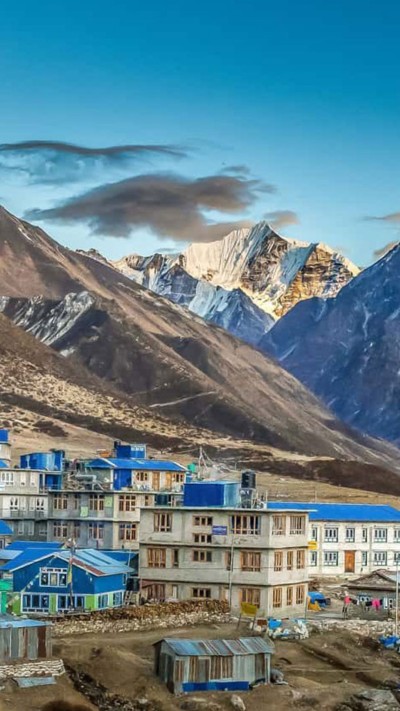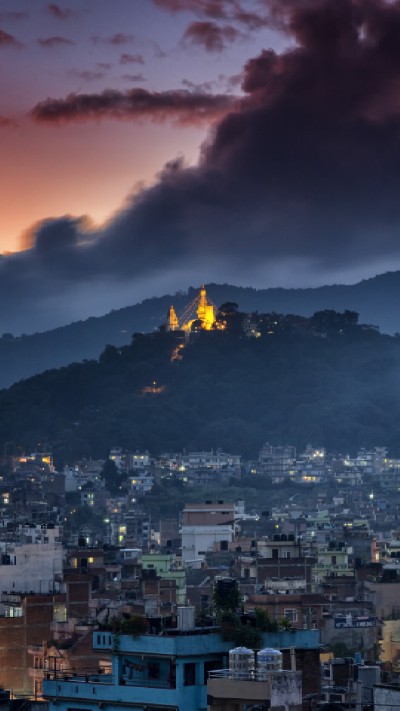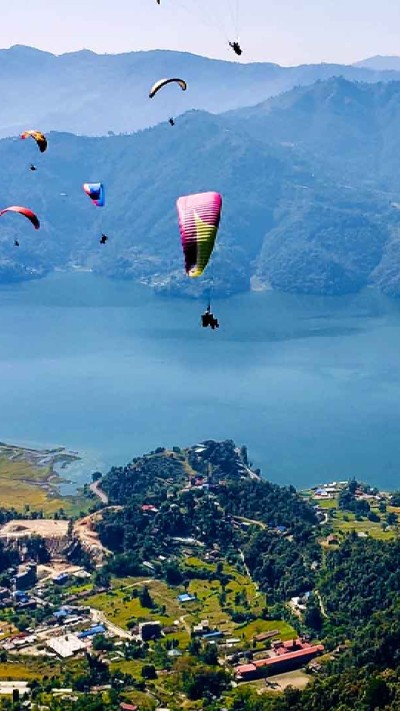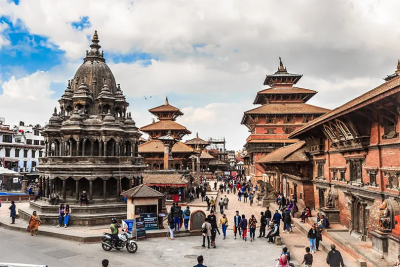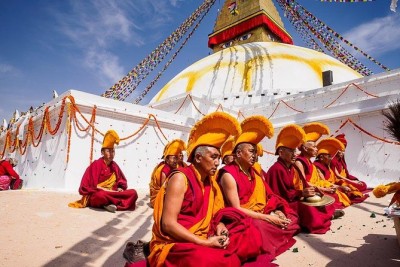Why Choose a Guided Tour for Kathmandu's Historical Sites?

Kathmandu, the capital of Nepal, is a city where history, spirituality, and vibrant culture come together in a fascinating blend. Its ancient temples, stupas, and palaces carry centuries-old stories that speak to the city’s rich heritage. For visitors seeking to immerse themselves in this treasure trove of history, the best way to explore these landmarks is through a guided tour.
While it’s possible to roam Kathmandu’s historic sites on your own, choosing a guided tour provides deeper insights, richer experiences, and greater convenience. In this blog, we’ll explore the top reasons why a guided tour is the best option for exploring Kathmandu’s historical sites.
1. Expert Knowledge and Insight
One of the most significant advantages of a guided tour is the wealth of knowledge your guide brings to the experience. Kathmandu’s historical sites are packed with intricate details, religious symbolism, and fascinating stories that can often be overlooked without expert guidance.
- Historical Context: Local guides provide context for the monuments you visit, explaining the significance behind their architecture, design, and location. For example, when visiting Kathmandu Durbar Square, a guide will share the history of the Malla kings who built many of the temples and palaces you see today. You’ll also learn about the political and cultural shifts that shaped the square over centuries.
- Mythology and Symbolism: Many of Kathmandu’s sites are steeped in Hindu and Buddhist mythology. A guide can explain the symbolic meaning behind the shrines, statues, and carvings you encounter. For example, at Swayambhunath Stupa, your guide can explain the significance of the Buddha’s all-seeing eyes and the history of the stupa’s creation as a pilgrimage site for Buddhists worldwide.
- Religious Practices and Traditions: Kathmandu’s temples and stupas are living places of worship, where locals continue to perform religious rituals. A knowledgeable guide will explain these practices, whether it’s the cremation ceremonies at Pashupatinath Temple or the clockwise kora (circumambulation) around Boudhanath Stupa. Understanding these rituals helps you appreciate the spiritual significance of these places.
With a guide by your side, each site comes alive with stories, facts, and interpretations, ensuring you leave with a much deeper understanding of the historical and cultural context.
2. Efficient Itinerary and Time Management
Navigating the bustling streets of Kathmandu on your own can be overwhelming. Traffic, crowded markets, and unfamiliarity with the city’s layout can slow down your exploration and make it harder to see everything on your list. A guided tour eliminates these hassles by offering a well-planned itinerary that ensures you make the most of your time.
- Optimized Route: Professional tour guides are experts in maximizing your time. They know the best routes to take between sites and how to avoid peak crowds. This is particularly valuable when visiting popular locations like Patan Durbar Square or Boudhanath Stupa, where traffic and large tourist groups can cause delays.
- Timed Entry to Sites: Many historical sites have specific opening hours or special ceremonies that you wouldn’t want to miss. A guided tour takes these factors into account, ensuring you arrive at each location at the ideal time. For instance, you can witness the evening rituals at Pashupatinath Temple or enjoy the serene atmosphere of Swayambhunath during sunrise.
- Avoid Overwhelm: Kathmandu is a sensory overload for many first-time visitors, with its busy streets, honking vehicles, and crowded markets. A guided tour allows you to relax and focus on the experience rather than logistics. Your guide will handle transportation, entry fees, and any unexpected hurdles, leaving you free to soak in the city’s beauty.
With an expert handling the details, you can efficiently visit multiple historical sites in a single day without feeling rushed or overwhelmed.
3. Access to Hidden Gems and Local Experiences
While famous sites like Pashupatinath and Swayambhunath are on every traveler’s list, Kathmandu has many hidden gems that can be difficult to discover without local knowledge. A guided tour opens doors to lesser-known places and authentic local experiences that go beyond the tourist trail.
- Hidden Temples and Monasteries: Kathmandu is home to countless small temples and monasteries tucked away in quiet alleys or hidden behind busy streets. A local guide knows where to find these hidden treasures and can introduce you to lesser-known but equally fascinating sites. For example, a visit to Itumbahal Monastery, a quiet retreat in the middle of bustling Kathmandu, offers a serene glimpse into monastic life.
- Local Artisans and Handicrafts: Many guided tours include stops at traditional workshops where local artisans create intricate handicrafts, such as pottery, metalwork, or Thanka paintings. Visiting these workshops offers a unique cultural experience that’s often missed by independent travelers. You can watch craftsmen at work and learn about the centuries-old techniques used to create these beautiful works of art.
- Cultural Festivals and Traditions: If you’re visiting during one of Kathmandu’s many festivals, a local guide can help you experience it like a true local. Whether it’s Indra Jatra, a celebration dedicated to the god of rain, or Buddha Jayanti, marking the birth of Buddha, your guide will explain the significance of the rituals and help you navigate the festivities.
Guided tours provide an authentic connection to Kathmandu’s cultural and historical fabric that goes beyond what you’d find in guidebooks or online.
4. Cultural Sensitivity and Respectful Exploration
Visiting historical and religious sites requires a degree of cultural sensitivity, especially in a city like Kathmandu, where many landmarks are active places of worship. A guided tour ensures that you explore these sacred spaces with the proper respect and understanding.
- Understanding Local Customs: From taking off your shoes before entering temples to knowing when and where photography is allowed, a guide will inform you of the do’s and don’ts to ensure you don’t inadvertently disrespect local customs. For instance, at Pashupatinath, it’s crucial to be mindful of the cremation ceremonies and the sanctity of the temple grounds.
- Appropriate Attire and Behavior: Many religious sites in Kathmandu require modest attire, especially when entering temples. A guide will advise you on appropriate clothing and behavior to ensure that you are respectful of local traditions. They can also inform you about the significance of certain gestures, like how to properly offer a prayer or light butter lamps at Buddhist stupas.
- Respecting the Environment: Kathmandu’s ancient sites are delicate, and preserving them for future generations is vital. A guided tour often emphasizes responsible tourism, including following designated paths, not touching fragile artifacts, and minimizing your environmental impact while visiting sacred sites.
A guided tour ensures that your exploration of Kathmandu’s historical sites is respectful, enriching, and culturally sensitive.
5. Support Local Economy and Community
Choosing a guided tour is not only beneficial for your personal experience, but it also supports the local economy and community. By opting for a local guide, you contribute directly to the livelihoods of individuals who are passionate about sharing their culture and history with visitors.
- Empowering Local Guides: Local tour guides are often deeply connected to their communities and possess a wealth of knowledge passed down through generations. By hiring a local guide, you empower individuals who play a vital role in preserving Kathmandu’s heritage and traditions.
- Sustainable Tourism: Many guided tours prioritize sustainable and responsible tourism practices, ensuring that the local culture, environment, and communities are respected and protected. These tours often collaborate with local artisans, businesses, and communities, contributing to the region’s economic development while promoting cultural preservation.
- Preserving Cultural Heritage: Local guides are advocates for the protection of Nepal’s historical and cultural landmarks. Their knowledge and passion for these sites help raise awareness about the importance of preservation, both among locals and international visitors.
By choosing a guided tour, you play an active role in preserving Kathmandu’s cultural heritage and supporting its local communities.
Conclusion
Kathmandu is a city that captivates the imagination with its ancient temples, majestic stupas, and rich cultural heritage. While independent travel has its merits, choosing a guided tour offers unparalleled access to knowledge, convenience, and cultural immersion that is difficult to achieve on your own.
From exploring hidden gems and gaining in-depth insights to respecting local customs and supporting sustainable tourism, a guided tour of Kathmandu’s historical sites ensures that your visit is both meaningful and memorable. Whether you’re a history enthusiast, a spiritual seeker, or a curious traveler, a guided tour is the perfect way to experience the beauty and complexity of Kathmandu’s rich history.
At Himalayan Social Journey, we offer expertly curated guided tours that take you through the heart of Kathmandu, unveiling its most significant landmarks and hidden treasures. Join us on a journey through time, culture, and spirituality as we explore the historical gems of Nepal’s capital city together.



